Wei-Ning Hsu
Robust Self-Supervised Audio-Visual Speech Recognition
Jan 05, 2022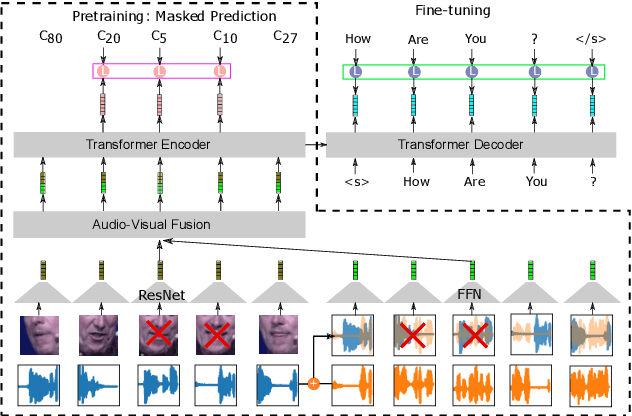
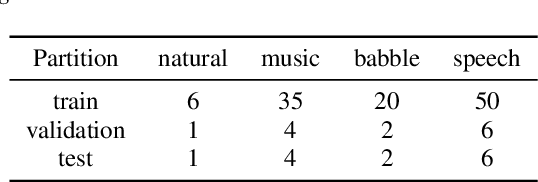
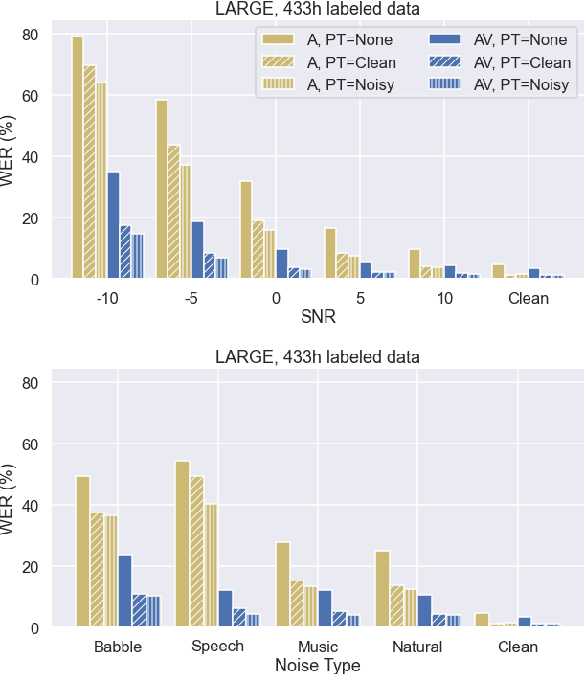

Abstract:Audio-based automatic speech recognition (ASR) degrades significantly in noisy environments and is particularly vulnerable to interfering speech, as the model cannot determine which speaker to transcribe. Audio-visual speech recognition (AVSR) systems improve robustness by complementing the audio stream with the visual information that is invariant to noise and helps the model focus on the desired speaker. However, previous AVSR work focused solely on the supervised learning setup; hence the progress was hindered by the amount of labeled data available. In this work, we present a self-supervised AVSR framework built upon Audio-Visual HuBERT (AV-HuBERT), a state-of-the-art audio-visual speech representation learning model. On the largest available AVSR benchmark dataset LRS3, our approach outperforms prior state-of-the-art by ~50% (28.0% vs. 14.1%) using less than 10% of labeled data (433hr vs. 30hr) in the presence of babble noise, while reducing the WER of an audio-based model by over 75% (25.8% vs. 5.8%) on average.
Learning Audio-Visual Speech Representation by Masked Multimodal Cluster Prediction
Jan 05, 2022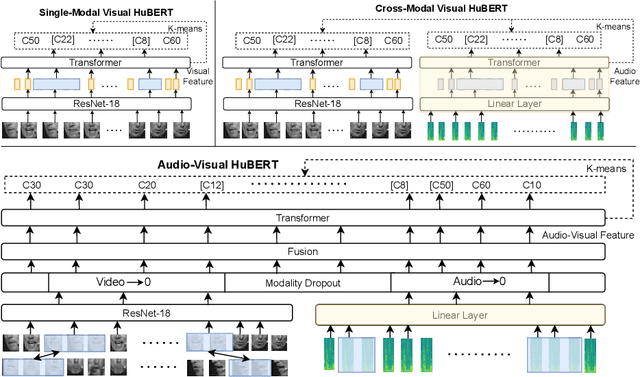
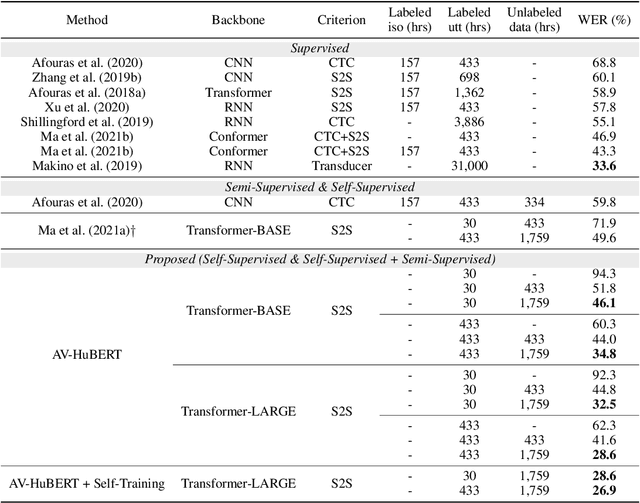


Abstract:Video recordings of speech contain correlated audio and visual information, providing a strong signal for speech representation learning from the speaker's lip movements and the produced sound. We introduce Audio-Visual Hidden Unit BERT (AV-HuBERT), a self-supervised representation learning framework for audio-visual speech, which masks multi-stream video input and predicts automatically discovered and iteratively refined multimodal hidden units. AV-HuBERT learns powerful audio-visual speech representation benefiting both lip-reading and automatic speech recognition. On the largest public lip-reading benchmark LRS3 (433 hours), AV-HuBERT achieves 32.5% WER with only 30 hours of labeled data, outperforming the former state-of-the-art approach (33.6%) trained with a thousand times more transcribed video data (31K hours). The lip-reading WER is further reduced to 26.9% when using all 433 hours of labeled data from LRS3 and combined with self-training. Using our audio-visual representation on the same benchmark for audio-only speech recognition leads to a 40% relative WER reduction over the state-of-the-art performance (1.3% vs 2.3%). Our code and models are available at https://github.com/facebookresearch/av_hubert
Textless Speech-to-Speech Translation on Real Data
Dec 15, 2021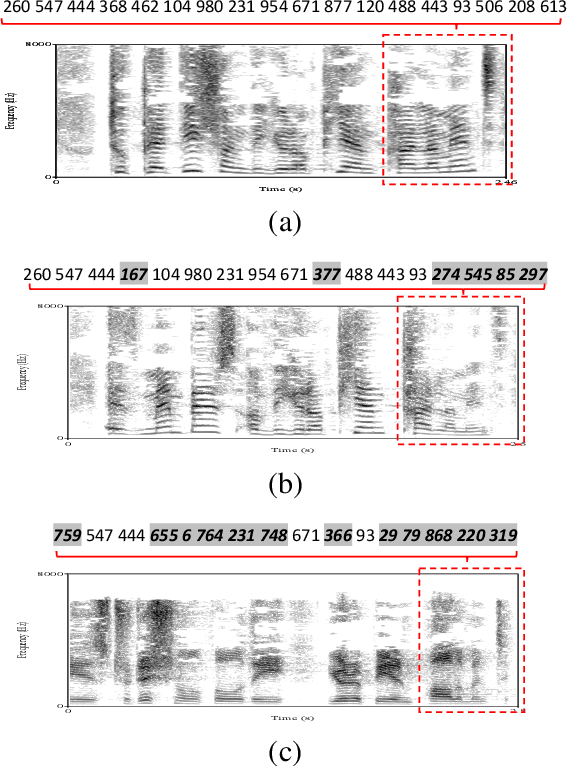
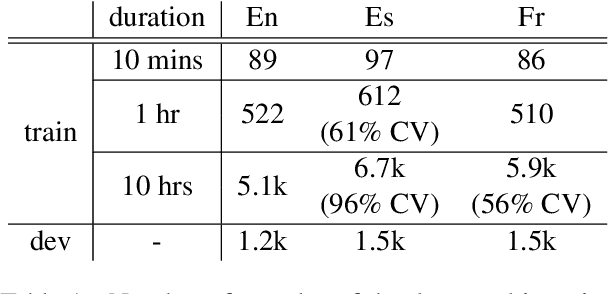
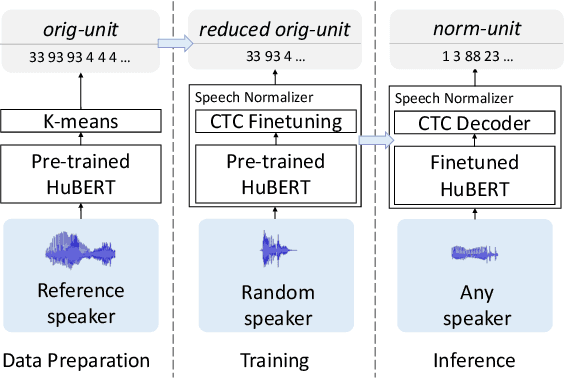
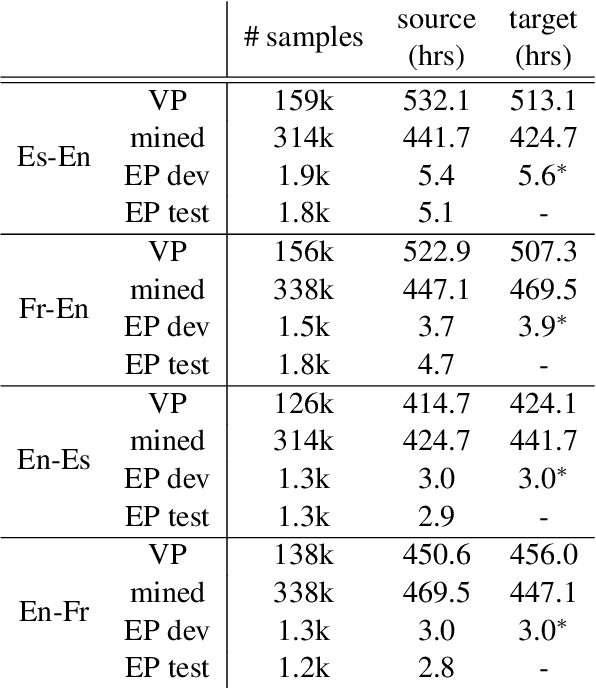
Abstract:We present a textless speech-to-speech translation (S2ST) system that can translate speech from one language into another language and can be built without the need of any text data. Different from existing work in the literature, we tackle the challenge in modeling multi-speaker target speech and train the systems with real-world S2ST data. The key to our approach is a self-supervised unit-based speech normalization technique, which finetunes a pre-trained speech encoder with paired audios from multiple speakers and a single reference speaker to reduce the variations due to accents, while preserving the lexical content. With only 10 minutes of paired data for speech normalization, we obtain on average 3.2 BLEU gain when training the S2ST model on the \vp~S2ST dataset, compared to a baseline trained on un-normalized speech target. We also incorporate automatically mined S2ST data and show an additional 2.0 BLEU gain. To our knowledge, we are the first to establish a textless S2ST technique that can be trained with real-world data and works for multiple language pairs.
Textless Speech Emotion Conversion using Decomposed and Discrete Representations
Nov 14, 2021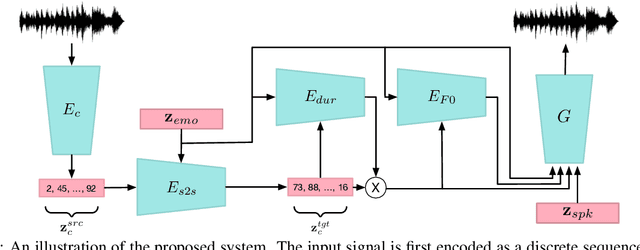
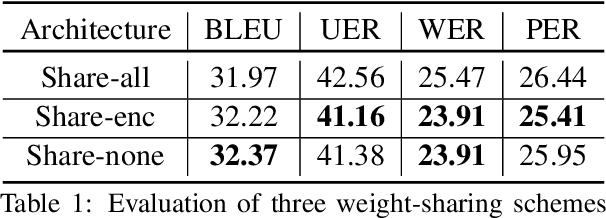
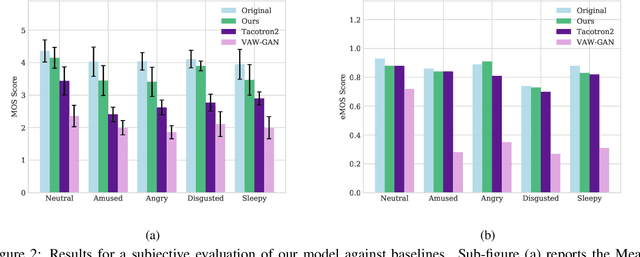
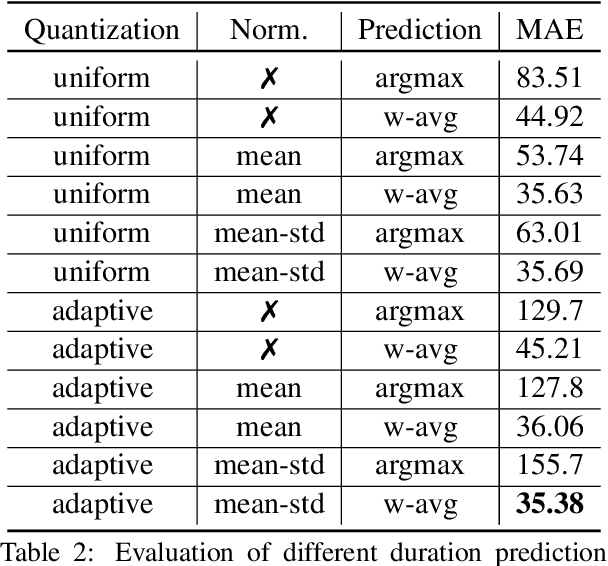
Abstract:Speech emotion conversion is the task of modifying the perceived emotion of a speech utterance while preserving the lexical content and speaker identity. In this study, we cast the problem of emotion conversion as a spoken language translation task. We decompose speech into discrete and disentangled learned representations, consisting of content units, F0, speaker, and emotion. First, we modify the speech content by translating the content units to a target emotion, and then predict the prosodic features based on these units. Finally, the speech waveform is generated by feeding the predicted representations into a neural vocoder. Such a paradigm allows us to go beyond spectral and parametric changes of the signal, and model non-verbal vocalizations, such as laughter insertion, yawning removal, etc. We demonstrate objectively and subjectively that the proposed method is superior to the baselines in terms of perceived emotion and audio quality. We rigorously evaluate all components of such a complex system and conclude with an extensive model analysis and ablation study to better emphasize the architectural choices, strengths and weaknesses of the proposed method. Samples and code will be publicly available under the following link: https://speechbot.github.io/emotion.
Direct simultaneous speech to speech translation
Oct 15, 2021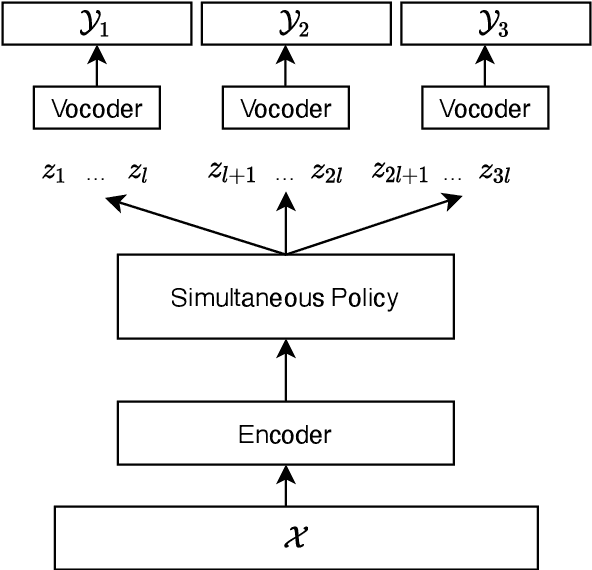
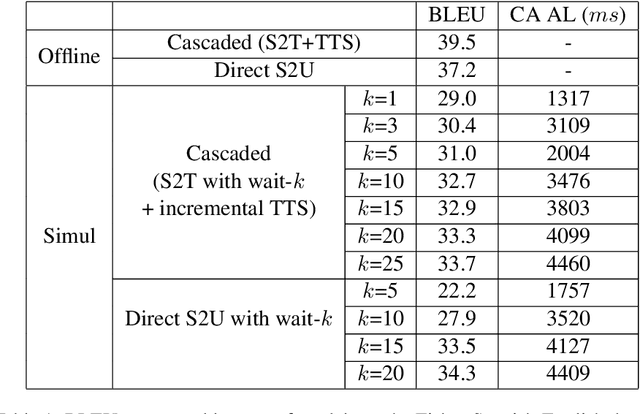
Abstract:We present the first direct simultaneous speech-to-speech translation (Simul-S2ST) model, with the ability to start generating translation in the target speech before consuming the full source speech content and independently from intermediate text representations. Our approach leverages recent progress on direct speech-to-speech translation with discrete units. Instead of continuous spectrogram features, a sequence of direct representations, which are learned in a unsupervised manner, are predicted from the model and passed directly to a vocoder for speech synthesis. The simultaneous policy then operates on source speech features and target discrete units. Finally, a vocoder synthesize the target speech from discrete units on-the-fly. We carry out numerical studies to compare cascaded and direct approach on Fisher Spanish-English dataset.
fairseq S^2: A Scalable and Integrable Speech Synthesis Toolkit
Sep 14, 2021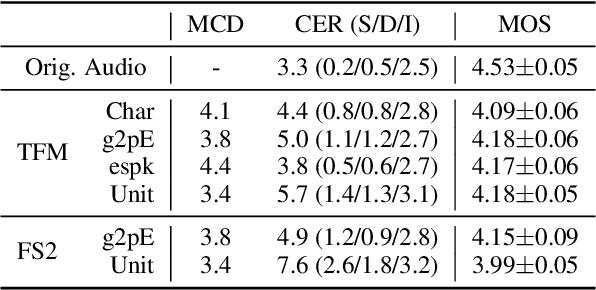

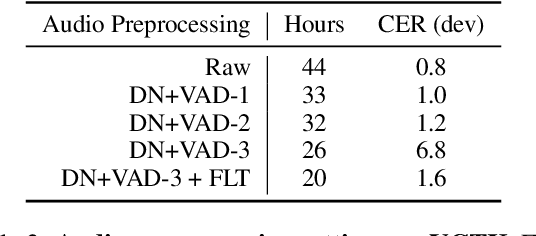
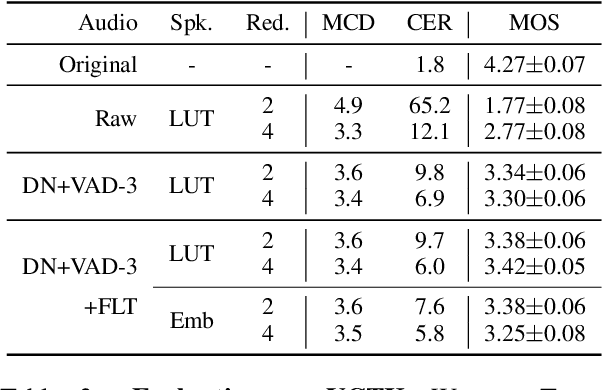
Abstract:This paper presents fairseq S^2, a fairseq extension for speech synthesis. We implement a number of autoregressive (AR) and non-AR text-to-speech models, and their multi-speaker variants. To enable training speech synthesis models with less curated data, a number of preprocessing tools are built and their importance is shown empirically. To facilitate faster iteration of development and analysis, a suite of automatic metrics is included. Apart from the features added specifically for this extension, fairseq S^2 also benefits from the scalability offered by fairseq and can be easily integrated with other state-of-the-art systems provided in this framework. The code, documentation, and pre-trained models are available at https://github.com/pytorch/fairseq/tree/master/examples/speech_synthesis.
Text-Free Prosody-Aware Generative Spoken Language Modeling
Sep 07, 2021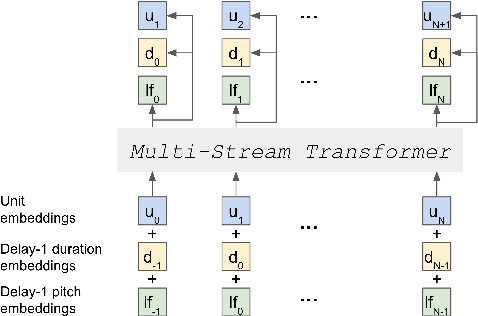
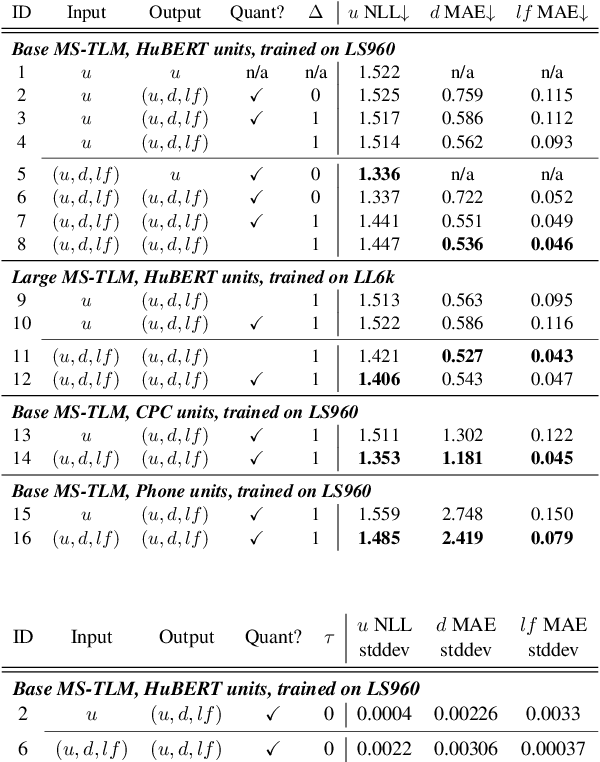
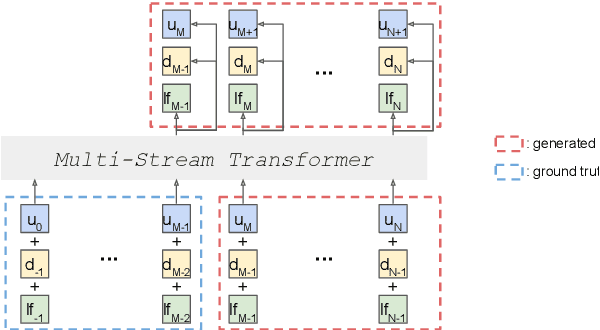

Abstract:Speech pre-training has primarily demonstrated efficacy on classification tasks, while its capability of generating novel speech, similar to how GPT-2 can generate coherent paragraphs, has barely been explored. Generative Spoken Language Modeling (GSLM) (Lakhotia et al., 2021) is the only prior work addressing the generative aspects of speech pre-training, which replaces text with discovered phone-like units for language modeling and shows the ability to generate meaningful novel sentences. Unfortunately, despite eliminating the need of text, the units used in GSLM discard most of the prosodic information. Hence, GSLM fails to leverage prosody for better comprehension, and does not generate expressive speech. In this work, we present a prosody-aware generative spoken language model (pGSLM). It is composed of a multi-stream transformer language model (MS-TLM) of speech, represented as discovered unit and prosodic feature streams, and an adapted HiFi-GAN model converting MS-TLM outputs to waveforms. We devise a series of metrics for prosody modeling and generation, and re-use metrics from GSLM for content modeling. Experimental results show that the pGSLM can utilize prosody to improve both prosody and content modeling, and also generate natural, meaningful, and coherent speech given a spoken prompt. Audio samples can be found at https://speechbot.github.io/pgslm.
Direct speech-to-speech translation with discrete units
Jul 12, 2021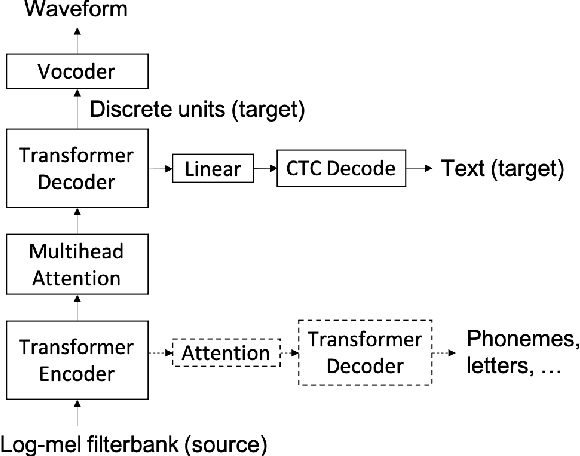

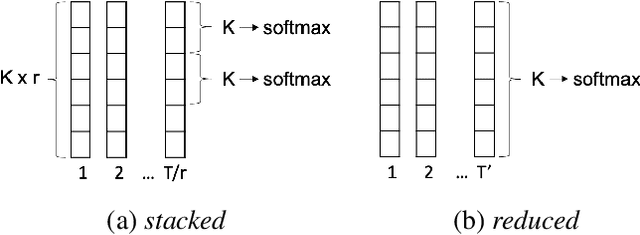
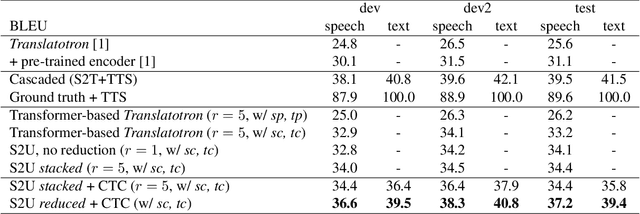
Abstract:We present a direct speech-to-speech translation (S2ST) model that translates speech from one language to speech in another language without relying on intermediate text generation. Previous work addresses the problem by training an attention-based sequence-to-sequence model that maps source speech spectrograms into target spectrograms. To tackle the challenge of modeling continuous spectrogram features of the target speech, we propose to predict the self-supervised discrete representations learned from an unlabeled speech corpus instead. When target text transcripts are available, we design a multitask learning framework with joint speech and text training that enables the model to generate dual mode output (speech and text) simultaneously in the same inference pass. Experiments on the Fisher Spanish-English dataset show that predicting discrete units and joint speech and text training improve model performance by 11 BLEU compared with a baseline that predicts spectrograms and bridges 83% of the performance gap towards a cascaded system. When trained without any text transcripts, our model achieves similar performance as a baseline that predicts spectrograms and is trained with text data.
Kaizen: Continuously improving teacher using Exponential Moving Average for semi-supervised speech recognition
Jun 14, 2021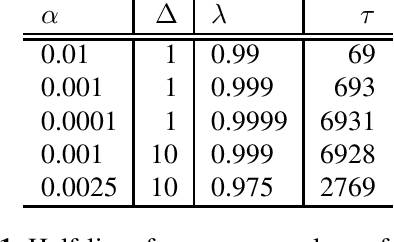
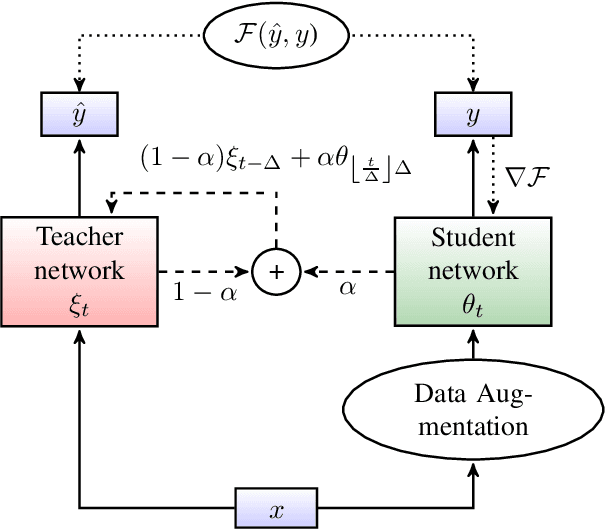
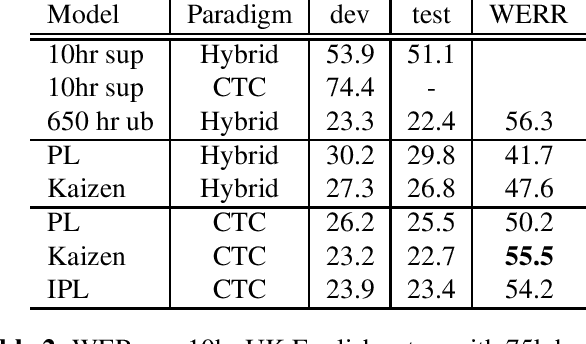
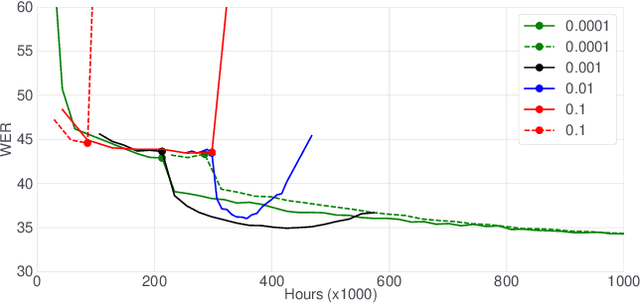
Abstract:In this paper, we introduce the Kaizen framework that uses a continuously improving teacher to generate pseudo-labels for semi-supervised training. The proposed approach uses a teacher model which is updated as the exponential moving average of the student model parameters. This can be seen as a continuous version of the iterative pseudo-labeling approach for semi-supervised training. It is applicable for different training criteria, and in this paper we demonstrate it for frame-level hybrid hidden Markov model - deep neural network (HMM-DNN) models and sequence-level connectionist temporal classification (CTC) based models. The proposed approach shows more than 10% word error rate (WER) reduction over standard teacher-student training and more than 50\% relative WER reduction over 10 hour supervised baseline when using large scale realistic unsupervised public videos in UK English and Italian languages.
HuBERT: Self-Supervised Speech Representation Learning by Masked Prediction of Hidden Units
Jun 14, 2021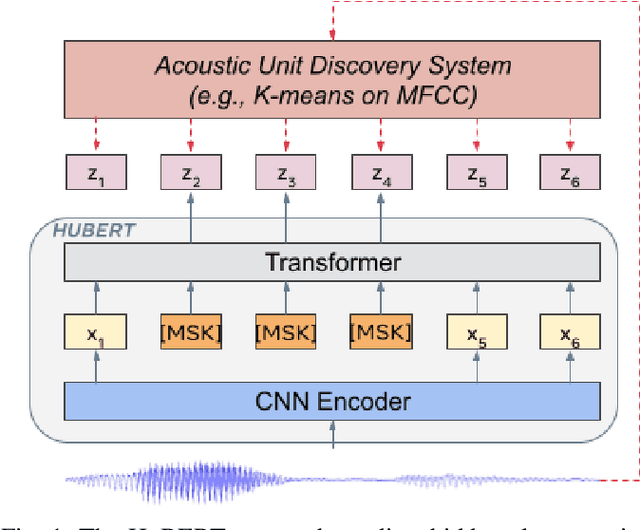
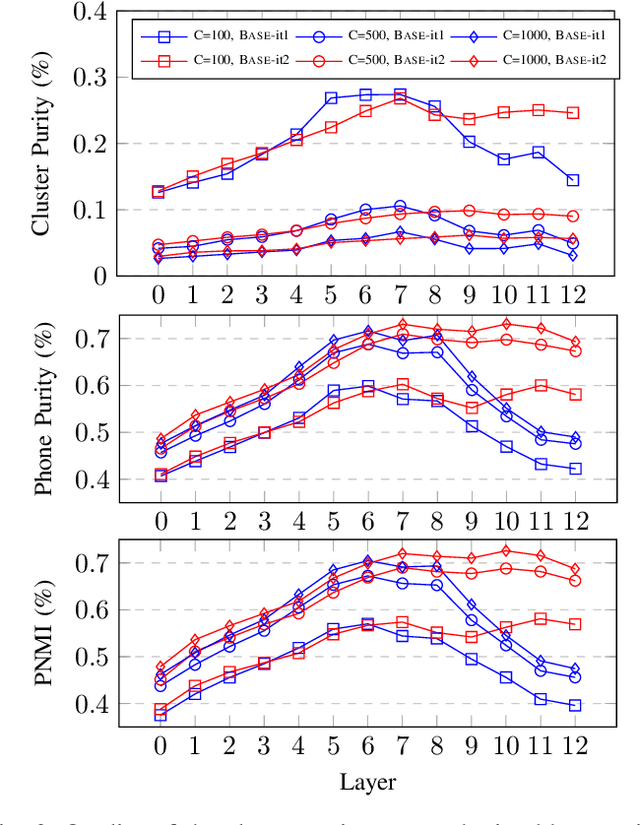

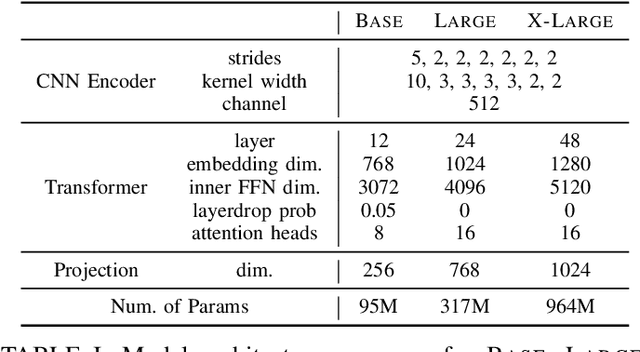
Abstract:Self-supervised approaches for speech representation learning are challenged by three unique problems: (1) there are multiple sound units in each input utterance, (2) there is no lexicon of input sound units during the pre-training phase, and (3) sound units have variable lengths with no explicit segmentation. To deal with these three problems, we propose the Hidden-Unit BERT (HuBERT) approach for self-supervised speech representation learning, which utilizes an offline clustering step to provide aligned target labels for a BERT-like prediction loss. A key ingredient of our approach is applying the prediction loss over the masked regions only, which forces the model to learn a combined acoustic and language model over the continuous inputs. HuBERT relies primarily on the consistency of the unsupervised clustering step rather than the intrinsic quality of the assigned cluster labels. Starting with a simple k-means teacher of 100 clusters, and using two iterations of clustering, the HuBERT model either matches or improves upon the state-of-the-art wav2vec 2.0 performance on the Librispeech (960h) and Libri-light (60,000h) benchmarks with 10min, 1h, 10h, 100h, and 960h fine-tuning subsets. Using a 1B parameter model, HuBERT shows up to 19% and 13% relative WER reduction on the more challenging dev-other and test-other evaluation subsets.
 Add to Chrome
Add to Chrome Add to Firefox
Add to Firefox Add to Edge
Add to Edge